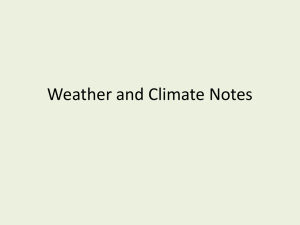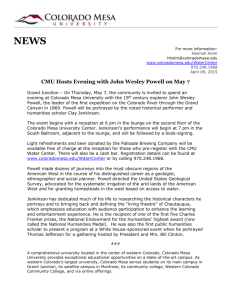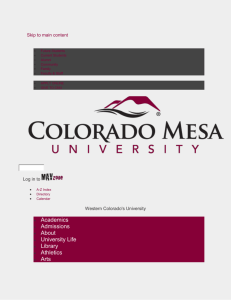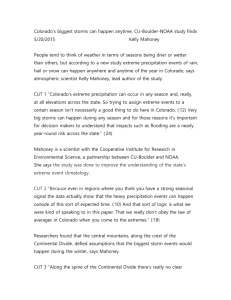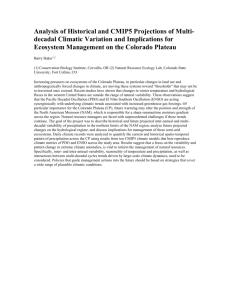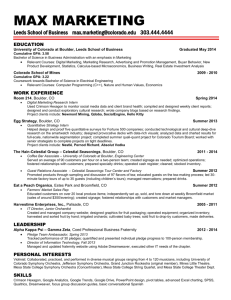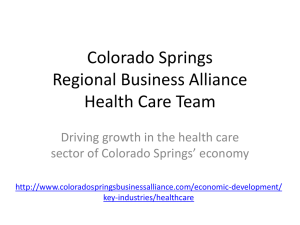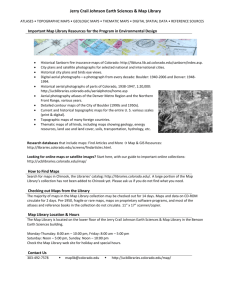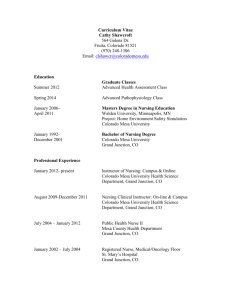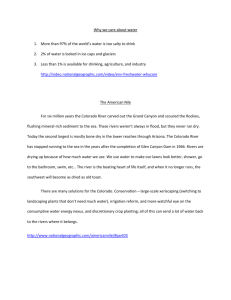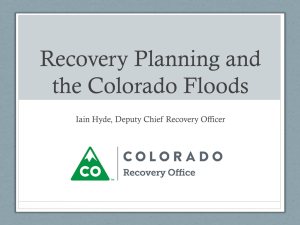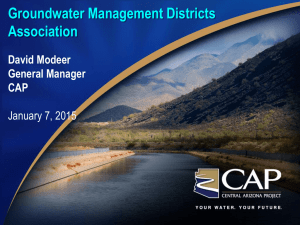Grand Valley Water Education 2012 Kickoff & Training Event John
advertisement
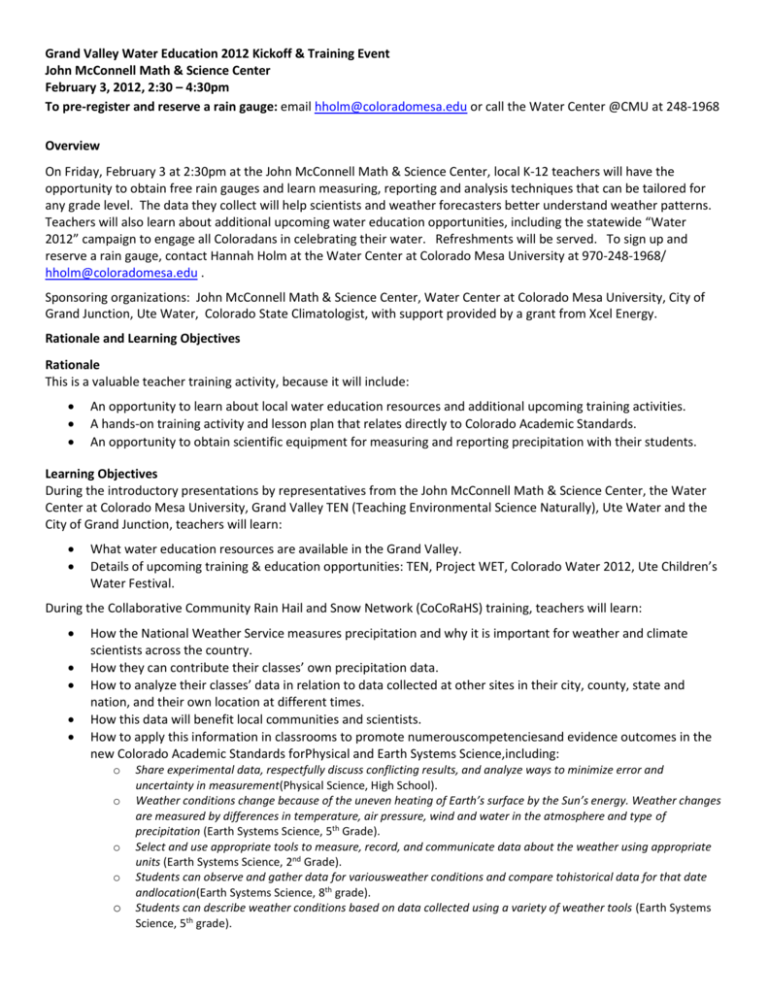
Grand Valley Water Education 2012 Kickoff & Training Event John McConnell Math & Science Center February 3, 2012, 2:30 – 4:30pm To pre-register and reserve a rain gauge: email hholm@coloradomesa.edu or call the Water Center @CMU at 248-1968 Overview On Friday, February 3 at 2:30pm at the John McConnell Math & Science Center, local K-12 teachers will have the opportunity to obtain free rain gauges and learn measuring, reporting and analysis techniques that can be tailored for any grade level. The data they collect will help scientists and weather forecasters better understand weather patterns. Teachers will also learn about additional upcoming water education opportunities, including the statewide “Water 2012” campaign to engage all Coloradans in celebrating their water. Refreshments will be served. To sign up and reserve a rain gauge, contact Hannah Holm at the Water Center at Colorado Mesa University at 970-248-1968/ hholm@coloradomesa.edu . Sponsoring organizations: John McConnell Math & Science Center, Water Center at Colorado Mesa University, City of Grand Junction, Ute Water, Colorado State Climatologist, with support provided by a grant from Xcel Energy. Rationale and Learning Objectives Rationale This is a valuable teacher training activity, because it will include: An opportunity to learn about local water education resources and additional upcoming training activities. A hands-on training activity and lesson plan that relates directly to Colorado Academic Standards. An opportunity to obtain scientific equipment for measuring and reporting precipitation with their students. Learning Objectives During the introductory presentations by representatives from the John McConnell Math & Science Center, the Water Center at Colorado Mesa University, Grand Valley TEN (Teaching Environmental Science Naturally), Ute Water and the City of Grand Junction, teachers will learn: What water education resources are available in the Grand Valley. Details of upcoming training & education opportunities: TEN, Project WET, Colorado Water 2012, Ute Children’s Water Festival. During the Collaborative Community Rain Hail and Snow Network (CoCoRaHS) training, teachers will learn: How the National Weather Service measures precipitation and why it is important for weather and climate scientists across the country. How they can contribute their classes’ own precipitation data. How to analyze their classes’ data in relation to data collected at other sites in their city, county, state and nation, and their own location at different times. How this data will benefit local communities and scientists. How to apply this information in classrooms to promote numerouscompetenciesand evidence outcomes in the new Colorado Academic Standards forPhysical and Earth Systems Science,including: o o o o o Share experimental data, respectfully discuss conflicting results, and analyze ways to minimize error and uncertainty in measurement(Physical Science, High School). Weather conditions change because of the uneven heating of Earth’s surface by the Sun’s energy. Weather changes are measured by differences in temperature, air pressure, wind and water in the atmosphere and type of precipitation (Earth Systems Science, 5th Grade). Select and use appropriate tools to measure, record, and communicate data about the weather using appropriate units (Earth Systems Science, 2nd Grade). Students can observe and gather data for variousweather conditions and compare tohistorical data for that date andlocation(Earth Systems Science, 8th grade). Students can describe weather conditions based on data collected using a variety of weather tools (Earth Systems Science, 5th grade).
